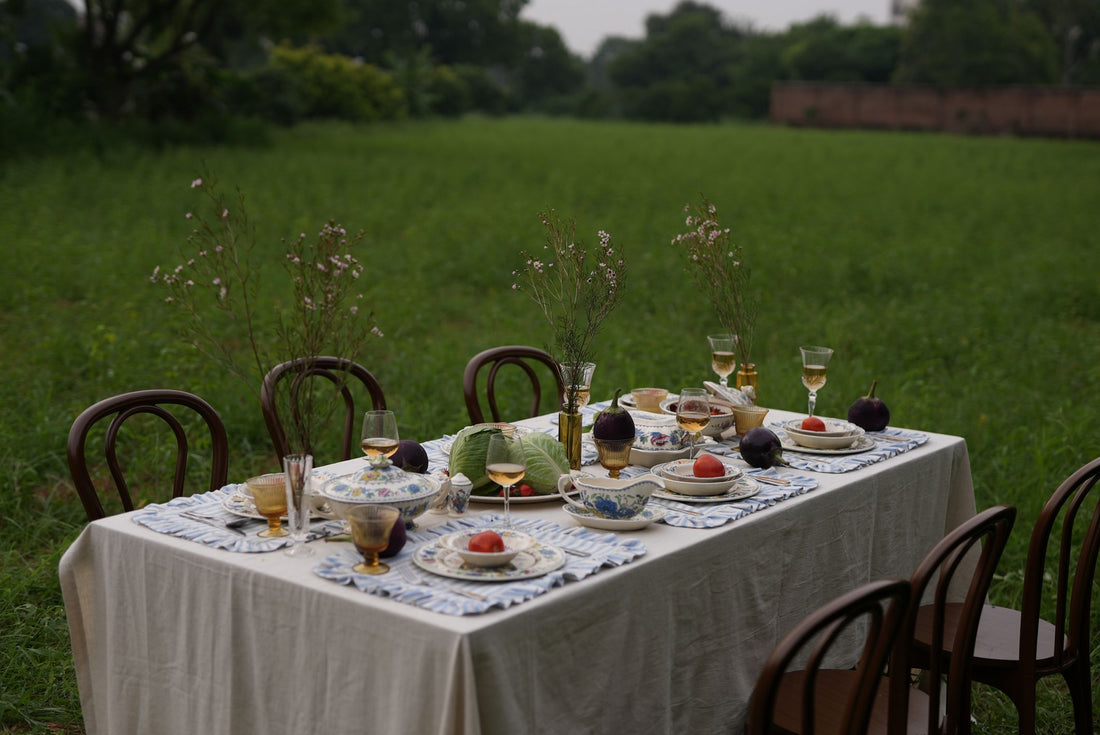
Antiques Vs Vintage: What's The Real Difference?
Share
There’s something almost magical about wandering into a shop emblazoned with the word “antiques,” as though stepping through its doors might transport you to another time. Inside, every nook is crammed with curiosities — the gleam of a dusty gramophone catches your eye, a dial-up telephone sits perched like a relic from another era, and shelves brim with vases, each with its own silent story. But here’s the question: how can you be sure these treasures are truly what they claim to be? Are these pieces authentic, or merely imitations of the past? Our curiosity led us on a journey of discovery, and now, we invite you to join us as we unravel the mystery of what makes an antique truly timeless. Here’s what we uncovered.
What does the trending term Vintage really mean?
In the realm of collectibles, the word vintage holds a certain mystique, conjuring images of objects from a bygone era, each one bearing the marks of time yet retaining an undeniable charm. These are treasures, often 20 to 30 years old, teetering on the edge of being called antiques — though not quite ancient enough to earn that title, reserved for those over a century in age.
But what makes something vintage isn't just its years; it's the quality, the craftsmanship, and the stories woven into its very fabric. Whether in fashion, furniture, or home decor, these pieces are cherished not only for their age, but for the elegance and nostalgia they carry. Vintage items, you see, are more than relics of the past; they are timeless, each one a window into a world that once was, and a testament to the enduring beauty of great design.
What does Antique really mean?
An antique is far more than just an old object; it is a portal to another time, a piece of history quietly waiting to tell its story. To be considered an antique, an item must have endured at least a century of existence, earning its place among the rare and precious. Unlike vintage items, which charm us with their nostalgic appeal, antiques hold a deeper significance — they are the relics of long-forgotten eras, crafted by hands now vanished, using techniques and materials that speak of another world.
Whether it’s a weathered armchair, an intricately carved chest, or a delicate piece of porcelain, antiques carry the weight of time itself. They are treasured not only for their age but for the skill, artistry, and history they embody. Each one whispers of lives lived, of moments passed, and of traditions that have stood the test of time. To own an antique is to hold a piece of the past in your hands, a link to a world long gone, but never forgotten.
The easiest way to understand the difference between Vintage and Antiques
Here’s how to tell the difference between vintage and antique items, laid out in a way that may just feel like unlocking the secrets of a hidden treasure trove:
- Age:
- Vintage: These pieces are from days not so distant, often between 20 to 30 years old but never crossing the century mark.
- Antique: To earn the title of an antique, an object must have seen at least 100 years pass it by, surviving the tides of time.
- Historical Significance:
- Vintage: A snapshot of more recent decades, often tied to iconic styles like mid-century modern or the bold lines of Art Deco.
- Antique: Antiques whisper of long-forgotten worlds and are rooted in deeper history, belonging to eras far removed from our own.
- Craftsmanship:
- Vintage: While still crafted with care, vintage pieces often hint at the early days of mass production, showcasing the distinct designs of their era.
- Antique: Antiques are often handmade or created with techniques long abandoned, their craftsmanship bearing the unmistakable mark of a skilled artisan’s touch.
- Value:
- Vintage: While valuable in its own right, a vintage piece often owes its worth to nostalgia, rarity, or the charm of its particular era.
- Antique: Antiques, however, command attention — and often a higher price — for their age, rarity, and the historical weight they carry.
- Authenticity:
- Vintage: Though charming, vintage items may be prone to imitations, making authenticity important, though less rigidly scrutinized.
- Antique: An antique demands proof of its past — a maker’s mark, a hidden inscription, or the material itself can reveal if it’s truly a relic of the ages.
- Condition:
- Vintage: A little wear is expected, but vintage pieces are still generally functional, meant to be admired and used in equal measure.
- Antique: Antiques, on the other hand, might bear the scars of time, but even in their weathered state, their value often grows.
- Perception:
- Vintage: These pieces are loved for their retro appeal, capturing the spirit of more recent times and appealing to collectors who revel in their quirky charm.
- Antique: Antiques, however, are revered as true testaments of history — timeless, irreplaceable, and cherished by those who appreciate the deep stories they carry.
Each category, in its own right, is a key to another time — the only question is, how far back do you wish to travel?

How to authenticate antiques in India
In the magical world of India, there are plenty of wonderful companies and talented professionals who specialize in authenticating antiques. Here are a few worth checking out:
The Indian Antique Shop, located in the lively city of Mumbai, focuses on charming antique furniture and decor. They offer authentication services to help you uncover the story behind various treasures.
Saffronart is an online auction house that dives into the realm of fine art and antiques. Their expert team provides appraisals and authentication services, ensuring your prized pieces are backed by solid history.
Then there's Nayika Arts, a group passionate about Indian art and antiques. They offer authentication and appraisal services, helping you learn more about your finds.
Dastkar primarily promotes traditional crafts, but they also have a soft spot for antiques and can offer valuable insights into their authenticity and origins.
For a more comprehensive approach, Art & Antique Appraisal and Consultancy Services operates throughout India, helping you with appraisals and authentication to reveal the secrets behind your art and antiques.
The Professional Antiques Dealers Association of India (PADAI) doesn’t directly authenticate items, but they connect you with knowledgeable antique dealers who can offer their expertise.
If you find yourself in Bangalore, the Museum of Art and Photography (MAP) occasionally holds workshops and events focused on valuing and authenticating antiques, featuring insights from experienced experts.
And let’s not forget the local antique dealers in bustling cities like Delhi, Mumbai, and Jaipur. Many have the know-how to authenticate items or can point you toward trusted appraisers.
As you seek authentication, just be sure to check the credentials and expertise of those you consult, especially for the specific type of antique you’re curious about!
